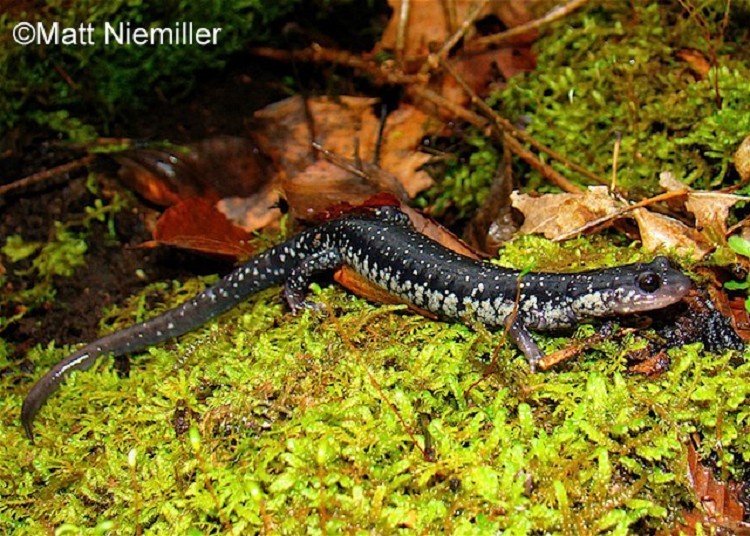Northern Slimy Salamander
Plethodon glutinosusOccurs in the eastern two-thirds of the state. White-spotted Slimy, Mississippi Slimy, and Northern Slimy Salamanders are virtually indistinguishable and make up the Slimy salamander complex.
Description: A large salamander (4.5 to 8.0 inches in length) has black dorsum with small, white, or silver spots scattered over the body. The belly is lighter than the back and the tail is round.
Similar Species: Distinguished from identical White-spotted Slimy and Mississippi Slimy Salamanders by the range and genetic analysis. Tellico Salamander has a separate range and Cumberland Plateau Salamanders are smaller and have a light chin. Southern Appalachian Salamander usually has fewer and smaller white spots on the back and sides.
Habitat: Beneath rocks, logs, and forest litter in woodland habitats; occasionally around cave entrances.
Diet: Earthworms, spiders, snails, flies, beetles, aphids, and other invertebrates.
Breeding information: Adults reproduce terrestrially during the spring and summer. Females lay 15-35 eggs in rotting logs or under stones and brood the eggs until hatching. The young hatch directly into miniature adults.
Status in Tennessee: Appears to be common in the Great Smoky Mountains and in parts of its range. Relatively resilient to timber harvesting; however clear-cuts have a negative impact on populations.
Fun Facts:
- The genus name Plethodon means “full of teeth”, reflecting the large number of teeth in the jaws.
Best places to see in Tennessee: Mid- to lower elevation forests of Great Smoky Mountain National Park.
